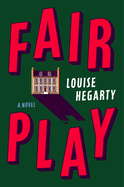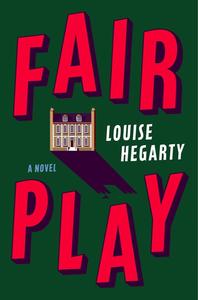
 Readers of both classic mysteries and literary fiction will enjoy this intermingling of the two in Louise Hegarty's first novel, Fair Play, an utterly fresh approach to the standard whodunit that adds emotional heft to playful pastiche.
Readers of both classic mysteries and literary fiction will enjoy this intermingling of the two in Louise Hegarty's first novel, Fair Play, an utterly fresh approach to the standard whodunit that adds emotional heft to playful pastiche.
Abigail has prepared, with her usual flair, the annual New Year's Eve murder mystery-themed caper that doubles as her older brother Benjamin's birthday party. The assembled guests are mostly their close friends: ne'er-do-well Declan; charming Stephen; Cormac and his fiancée, Olivia; Benjamin's former fiancée, Margaret; and a somewhat mysterious newcomer from Benjamin's workplace, Barbara. The murder is solved in due course and merrymaking goes on well into the wee hours. But this January 1, instead of celebrating with his hungover friends in the mansion they've rented for the occasion, Benjamin is found dead.
Here, the novel splits into two parallel storylines. One of them follows Abigail as she deals with the logistics of the funeral and the shattering grief of losing her brother, adding to her isolation after having lost both their parents earlier in life. In this path, her return to her life is piecemeal and painful, and she struggles to make sense of what's happened.
In the other strand, their story is transformed in significant ways to reflect the classic conventions of the mystery genre. Suddenly the siblings are more monied, the mansion their own instead of rented, with their own set of gossipy neighbors. Many of the trappings of a good drawing-room mystery are well in place: a locked-room murder, a plausible roster of suspects with more or less apparent motives, and an acclaimed detective, Auguste Bell (who is a nod to Hercule Poirot and Sherlock Holmes). And true to convention, he has a sidekick/foil. As he says, "And this is Sacker, of course. My sidekick--my associate--my Watson, you understand?... He'll come up with a series of ideas for which I will invariably mock him before one of his inane theories will spark something in me."
Hagerty infuses this play on the traditional narrative with other self-referential commentary and winks at genre specifics, including four pages of prescriptions and rules for mysteries taken from an array of writers throughout the years, including S.S. Van Dine, who advises, "There simply must be a corpse in a detective novel, and the deader the corpse the better."
Hagerty skillfully manipulates the genre, calling attention to the reader's expectations and subverting familiar tropes in the service of nuanced storytelling. Fair Play is a thoroughly satisfying and thought-provoking read. --Elizabeth DeNoma, executive editor, DeNoma Literary Services, Seattle, Wash.
Shelf Talker: Louise Hegarty's debut novel is a clever approach to the drawing-room mystery, satirical and thought-provoking.

